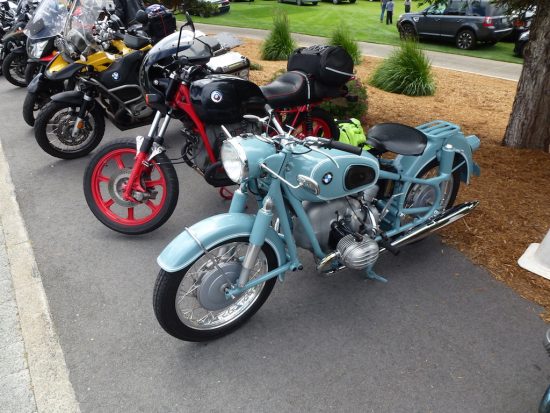California is well-known for its scenic routes and highways. Riding down the Pacific Coastal Highway is a must for all motorcyclists. But the exhilarating sense of freedom you can feel riding down the coast line comes with some responsibilities. Namely, you have to abide by the motorcycling and road safety laws, to ensure that there are no accidents. Over the years, it was researched why motorcycle accidents have been on the increase versus car accidents. Some statistics leaned toward manufacturing defects, while others pointed toward external stimuli that hampered the motorcyclists pathway. 70% of motorcycle accidents are said to take place at intersections, where drivers do not see the motorcycle coming and there is a subsequent collision.
Getting a Motorcycle License
California follows some general nation-wide rules for road and traffic safety. But there are also specific laws within the state of California that need to be followed as well, if you are riding a motorcycle in Los Angeles. Where you drive a motorcycle, moped, a gas-powered or electric car, you are required to have a license. The type of license you will get will be based on your age and the kind of vehicle you drive or ride. While motorcyclists share some of the rules that their four-wheeler counterparts do, there are additional rules that especially apply to them.
They would have to:
● Take an approved driver education course and pass the exam
● Possess a legitimate motor vehicle’s driver’s license
● Be 16 years or older to be eligible for a motorcycle driver’s license
● Stay off the roads in the dark, not carry passengers or ride on the freeway on a motorcycle permit (valid for only 12 months)
● Provide verifiable permission from a legal guardian or parent in case they are under 18 years of age
● Complete the California Highway Motorcycle Training Course if they are under 21 years of age
Safety Equipment Laws
There are some regulations in California regarding safety equipment that all motorcycle operators need to follow, and this includes wearing safety gear.
● According to the California Vehicle Code (CVC), if you are a motorcycle driver, you must wear a proper helmet, whose standards meet the requirements made by the US Department of Transport
● The helmets can have only one in-ear phone speaker, so that the driver is vigilant of their surroundings
● The handlebars of the motorcycle cannot be six inches above the shoulders of the rider
● All motorcycles must have properly functioning left and right mirrors
● There should be properly functioning turn signals on both the front and rear for motorcycles built after January 1, 1973
● Motorcycle exhausts must be validated by the Motorcycle Anti-Tampering Act, for motorcycles manufactured after 2013
● Motorcycles built in 1978 or later must have their headlights switched on at all times, when on the road
Lane Safety
Motorcycle drivers will have to observe lane safety, by being aware of the lane splitting laws prevalent in California. Lane splitting occurs when a motorcyclist moves between two lanes to get ahead of the traffic. As of 2016, California Law allows lane splitting, provided they observe a permissible driving speed, and do not block, slow down or impede other vehicles in the process. Lane sharing occurs when two motorcycles ride side by side in one lane. There are no laws preventing lane sharing as of now, in California. While motorcycle drivers are somewhat protected by CVC in lane safety, you can ask any motorcycle accident lawyer in Los Angeles, and they will tell you that accidents during lane splitting and sharing are possible and still highly prevalent.
Passengers
California does not have any restrictions on motorcycle drivers carrying passengers, unless they have only a motorcycle permit, in which case they are prohibited to do so. There is no age restriction on the passengers either. But according to California law, the passenger’s seat must be fastened properly behind the driver’s seat. Passengers must also have their own footrests on either side, which they have to use while they are riding.
Requirements for Motorcycle Insurance
In the event of an accident, if a motorcyclist in California has not opted for minimum motorcycle insurance coverage, they are liable to have their licenses suspended for a year. Motorcyclists are required by law to have minimum liability coverage of $5000 for property damage, $15,000 for physical injury caused to a person and $30,000 for physical injuries to multiple people. While this is the minimum required coverage, it is still advisable to get higher coverage limits, including those for uninsured and underinsured motorist coverage.



Speak Your Mind